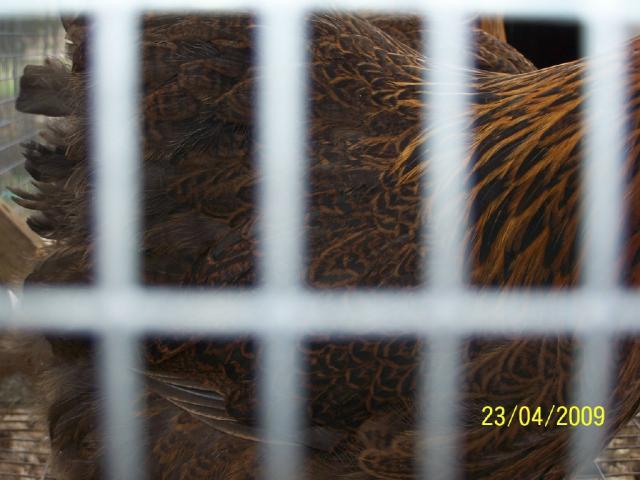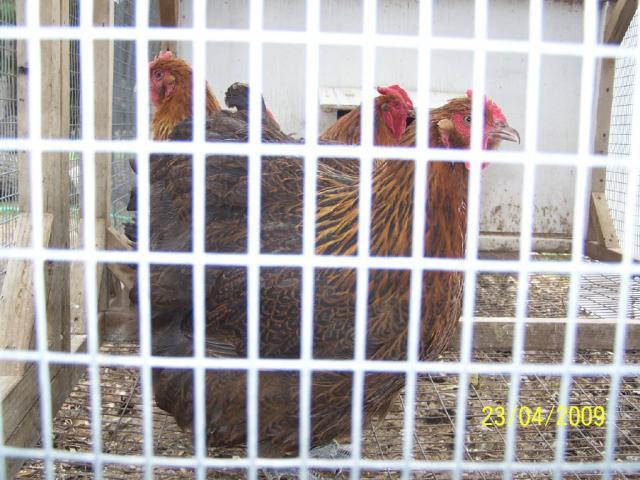Quote:
Ignoring the name of the colour & just looking at the birds themselves, in particular the photos of the male.
http://chirpychicks.com/lemon_pyle_brahma.htm
Then looking at these.
http://chirpychicks.com/buff_columbian_brahma.htm
Considering ease of making a new colour & considering buff columbian is a colour already established in Brahmas.
Don't you think it more likely that the birds in the pics are splash buff columbian?
I think sometimes misleading names are given to birds, possibly to make them sound more exotic......such as the violet laced or was it lilac laced wyandottes which were nothing more than blue laced silver.
Krys,
I would agree that the birds on the Chirpy site are blue-splashed white columbian. But they have an additional gene(s) adding black pigment that is hypostatic to the blue gene. Look at the picture with the three hens and the roo. Her head is heavily pigmented with eumelanin and she still has some lacing on her breast from the pattern gene.
The pictures at the beginning of the string are different( at least they look different to me) than the birds on the Chirpy site. They should be columbian restricted to get the lemon color on the breast but they have a large amount of diluted eumelanin in their feathers. The hen that is above the rest of the birds is genetically different than the roo and the other hen.
My mistake (which was a big one) I forgot to add an additional bird in my crossing regimen. After the blue partridge, I should have included a columbian restricted variety( buff columbian). I wrote the regimen as if I had included the cross. Note the false spangling and lacing.
Thanks for catching my mistake. I will go back and edit the breeding regimen. I worked out the genetics in my head- I guess I should work out the genetics on paper then do my writing.
Tim





